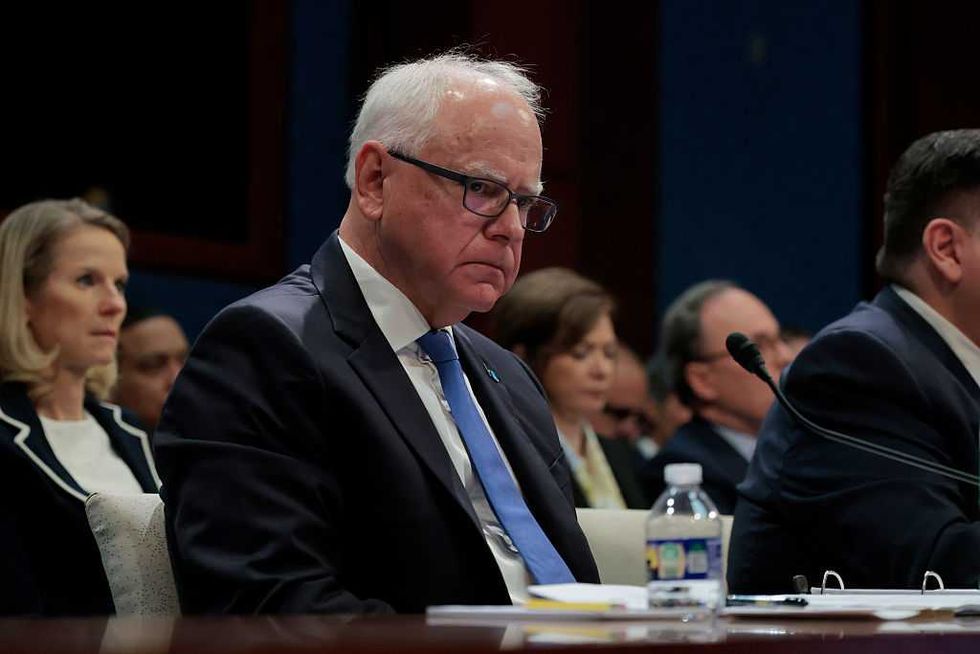
www.theblaze.com
Ford just lost $20 billion on its EV investment
If you want a clear picture of where the American auto market is heading, don’t look at political speeches or glossy concept vehicles. Look at where manufacturers are spending — and writing off — real money. Case in point: Ford’s $19.5 billion decision to abandon plans for a next-generation all-electric F-150.Ford’s leadership is now openly saying what many in the industry have been signaling quietly: Customers are not moving in lockstep with regulatory timelines.The company’s change of direction for its massive BlueOval City complex in Tennessee is one of the clearest signals yet that the industry’s all-electric future, at least as it was sold to consumers and investors, is being fundamentally rethought.Instead of building a new electric F-150 Lightning there, Ford will pivot the facility toward producing lower-cost gasoline-powered trucks while shifting electric strategy toward hybrids, extended-range electric vehicles, and smaller EVs.Demand in the driver’s seatThis move matters because Ford did not quietly slow production or delay a model year refresh. It wrote down billions of dollars in electric vehicle assets, restructured long-term plans, and publicly admitted that customer demand — not forecasts or incentives — is now driving decisions.Ford expects roughly $19.5 billion in special charges tied to this pivot, most of which will hit in the fourth quarter, with an additional $5.5 billion in cash costs spread through 2027. Of that total, $8.5 billion represents EV asset write-downs. That is corporate language for investments that will not deliver the returns originally promised.Yet Wall Street’s reaction was telling. Ford stock rose about 2% in after-hours trading following the announcement and remains up nearly 40% this year. Investors appear to see this not as failure, but as realism.Sticker shockThe electric F-150 Lightning was once positioned as proof that electrification could conquer America’s best-selling vehicle segment. In theory, the idea made sense. In practice, the numbers never fully added up. High prices, heavy battery packs, range limitations under real-world towing conditions, and charging concerns narrowed the pool of potential buyers. Demand softened even as incentives increased.Ford now plans to transition the Lightning into an extended-range electric vehicle, pairing an electric drivetrain with a gasoline-powered generator. This is not a retreat from electrification. It is an acknowledgment that pure battery-electric power trains do not yet meet the needs of a large portion of truck buyers.Ford CEO Jim Farley framed the shift plainly. High-end EVs priced between $50,000 and $80,000 were not selling in sufficient volume. That reality is difficult to ignore when inventory sits on dealer lots and profit margins evaporate.Hybrid vigorAt the same time, Ford is going all-in on hybrids, including plug-in hybrids, and reinvesting in its core strengths: trucks, SUVs, and commercial vehicles. This reflects a broader industry trend. Hybrids offer meaningful fuel economy improvements without requiring buyers to overhaul their driving habits or rely on charging infrastructure that remains inconsistent in many parts of the country.Ford’s revised outlook projects that by 2030, about half of its global volume will come from hybrids, extended-range EVs, and fully electric vehicles combined. That is a significant increase from today, but it is far more balanced than earlier projections that leaned heavily toward full electrification.Lightning rodOne of the more curious elements of Ford’s announcement is its plan to build a fully connected midsize electric pickup starting in 2027, based on a new low-cost “Universal EV Platform.” The company suggests this truck could start around $30,000, a figure that raises serious questions.To put that claim into context, Ford’s Maverick Hybrid, which uses a small 1.1 kilowatt-hour battery, already approaches $30,000 in many configurations. A midsize EV pickup would likely require an 80 kilowatt-hour battery or more. Battery costs have declined, but not nearly enough to make that math easy — especially while maintaining margins.Consumers will ultimately decide whether such a vehicle makes sense. Price, capability, range, and charging convenience will matter far more than marketing language. Automakers are learning, sometimes the hard way, that affordability cannot be willed into existence by press releases.Batteries includedFord’s restructuring also includes repurposing battery plants in Kentucky and Michigan for a new stationary energy storage business. This is a strategic move that acknowledges batteries may find more reliable profitability off the road than on it, particularly in data centers and grid stabilization applications where weight, charging time, and cold-weather performance are less critical concerns.The broader lesson here is not that electric vehicles are disappearing. They are not. It is that the one-size-fits-all electrification narrative has collided with economic and consumer reality. Automakers were pushed, through regulation and incentives, to prioritize battery-electric vehicles at a pace the market could not fully absorb.When policy environments change, as they recently have, manufacturers regain flexibility. Ford’s leadership is now openly saying what many in the industry have been signaling quietly: Customers are not moving in lockstep with regulatory timelines.From a business standpoint, Ford is attempting to stabilize profitability. The company raised its adjusted earnings guidance for 2025 to about $7 billion, even as these restructuring charges weigh on net results. It is aiming for a path to profitability in its Model e EV division by 2029, with incremental improvements beginning in 2026.That is a long runway, and it reflects how difficult it has been to make EVs profitable at scale. Traditional internal combustion and hybrid vehicles continue to subsidize electric losses across the industry. Ford is now being more transparent about that reality.RELATED: American muscle-car culture is alive and well ... in Dubai Matt Cardy/Getty ImagesTurning radiusThis shift also has implications for American manufacturing and jobs. BlueOval City was originally pitched as a cornerstone of the electric future. Its revised mission underscores how quickly industrial strategies can change when assumptions fail. Gasoline and hybrid trucks remain highly profitable, and demand for them remains strong.Ford insists this is a customer-driven strategy, not a retreat. In many ways, that framing is accurate. Consumers have shown they value choice, reliability, and affordability more than power-train ideology. They want vehicles that fit their lives, not policy targets.For buyers, this could be good news. A more balanced market tends to produce better products at more reasonable prices. Hybrids, extended-range EVs, and efficient gasoline vehicles all play a role in reducing fuel consumption without forcing trade-offs many drivers are unwilling to accept.For investors, Ford’s announcement may mark a turning point toward discipline and realism. Writing down nearly $20 billion is painful, but continuing to chase unprofitable volume would be worse.For the industry, the message is unmistakable. Electrification is evolving, not ending. But it will happen on consumer terms, not political timelines.Ford’s course correction is not about abandoning the future. It is about surviving the present — and doing so with a clearer understanding of what American drivers are actually willing to buy.The American car industry would be in a much stronger position today had its CEOs not embarked on the EV joy ride with politicians promising subsidies. Next time maybe the brands will listen to the customer.












